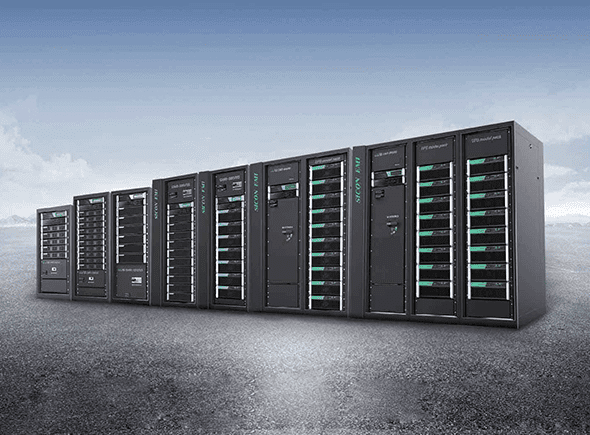The rise of global consensus on carbon neutrality and energy transition, as well as the energy shortage caused by the Russia-Ukraine war, have all pushed the global energy storage projects to continue heating up. China’s ESS battery have attracted much attention in this wave, and their confirmed advantages are truly facing competition.
Huge market opportunities for battery energy storage systems
Energy storage system integrators and cell manufacturers have encountered unprecedented market opportunities. 2022 is considered a landmark turning point in the energy storage market, and the global energy storage market has experienced explosive growth. The promotion of energy policies, the energy crisis caused by the Russia-Ukraine conflict, and other factors have collectively promoted the rapid growth of the market, surpassing the sum of the past few years in terms of incremental growth in 2022.
According to the statistics of the China Energy Storage Alliance (CNESA), the newly added global scale of new energy storage projects exceeded 20GW for the first time in the past year, reaching 20.4GW, which is twice the same period in 2021. The three major markets of China, Europe, and the United States have become the main energy storage markets, with market shares of 36%, 26%, and 24% respectively.
In this wave of growth, energy storage system integrators have gained substantial returns.
2023: The battery energy storage system market is even more exciting
In the first half of 2023, the global market for power storage witnessed a remarkable surge in shipments, reaching a staggering 79 GWh. This growth rate, the fastest year-over-year increase to date, accounted for a remarkable 77% of the market. Notably, within this trend, household power storage shipments accounted for 13 GWh, with large-scale storage projects emerging as the primary driving force behind this surge. In the major markets of China, the United States, and Europe, large-scale storage projects have firmly established themselves as the primary application for power storage solutions.
Policy and Technological Innovation Fueling Market Growth
The United States
In the United States, the influence of the Investment Tax Credit (ITC) policy continues to strengthen. The new ITC policy has extended the tax credit period by ten years and increased the credit percentage to a range of 30% to 70%. Notably, this policy now includes standalone energy storage, significantly boosting the profitability of energy storage projects.
Under the impetus of this policy, the recorded capacity of electrochemical energy storage in the United States has rapidly increased. As of April 2023, recorded capacity has reached 30.2 GW, representing an impressive 89% year-over-year growth. Additionally, the resurgence of the photovoltaic market in the United States has further stimulated the development of energy storage.
Europe
While Europe has predominantly focused on household energy storage, large-scale storage projects are rapidly gaining ground. Forecasts indicate that by 2023, Europe’s additional installed capacity for large-scale energy storage will reach 3.7 GW, marking a remarkable 95% year-over-year growth. Key markets driving this growth include the United Kingdom, Italy, France, Germany, Ireland, and Sweden. With reinforced policy support, markets such as Spain, Germany, and Greece may experience even faster growth in 2024, propelling Europe’s additional installed capacity to 5.3 GW, a 41% year-over-year increase.

Rising Stars in China’s ESS Battery Industry
China’s battery manufacturers are actively replicating and expanding their dominance in the field of power batteries. Lithium iron phosphate (LFP) technology plays a vital role in the energy storage sector due to its cost-effectiveness, high safety standards, and extended cycle life. Domestic battery manufacturers have paved the way for greater economic and safety possibilities through innovation in technology and production capacity.Presently, lithium iron phosphate (LFP) batteries are gradually replacing ternary lithium batteries in the energy storage market, with domestic battery manufacturers demonstrating outstanding innovation in LFP battery materials and structures.
China’s battery industry possesses a clear advantage in terms of scale. China produces 70% of the world’s lithium batteries, nearly 80% of positive electrode materials, and nearly 90% of negative electrode materials. To reduce systemic costs, domestic battery manufacturers continually seek breakthroughs, introducing high-capacity ESS battery that enhance unit efficiency.
Future Challenges and Opportunities
Chinese battery companies must continue to innovate technologically, adapt to market demands, and meet requirements such as local manufacturing and carbon barriers. Expanding into overseas markets, especially in increasingly competitive environments, presents a daunting challenge. Chinese battery companies need to overcome geopolitical risks and the growing green barriers to ensure success in the global market.
While China’s vision of excess lithium battery production capacity and expanding market share has become a reality, facing future challenges requires Chinese battery companies to persist in technological innovation and adapt to market changes, ensuring sustained success and sustainable development. Only by expanding their deterministic advantages, seizing technological innovation and industry implementation, can they achieve win-win results and propel the carbon-neutral era forward.
